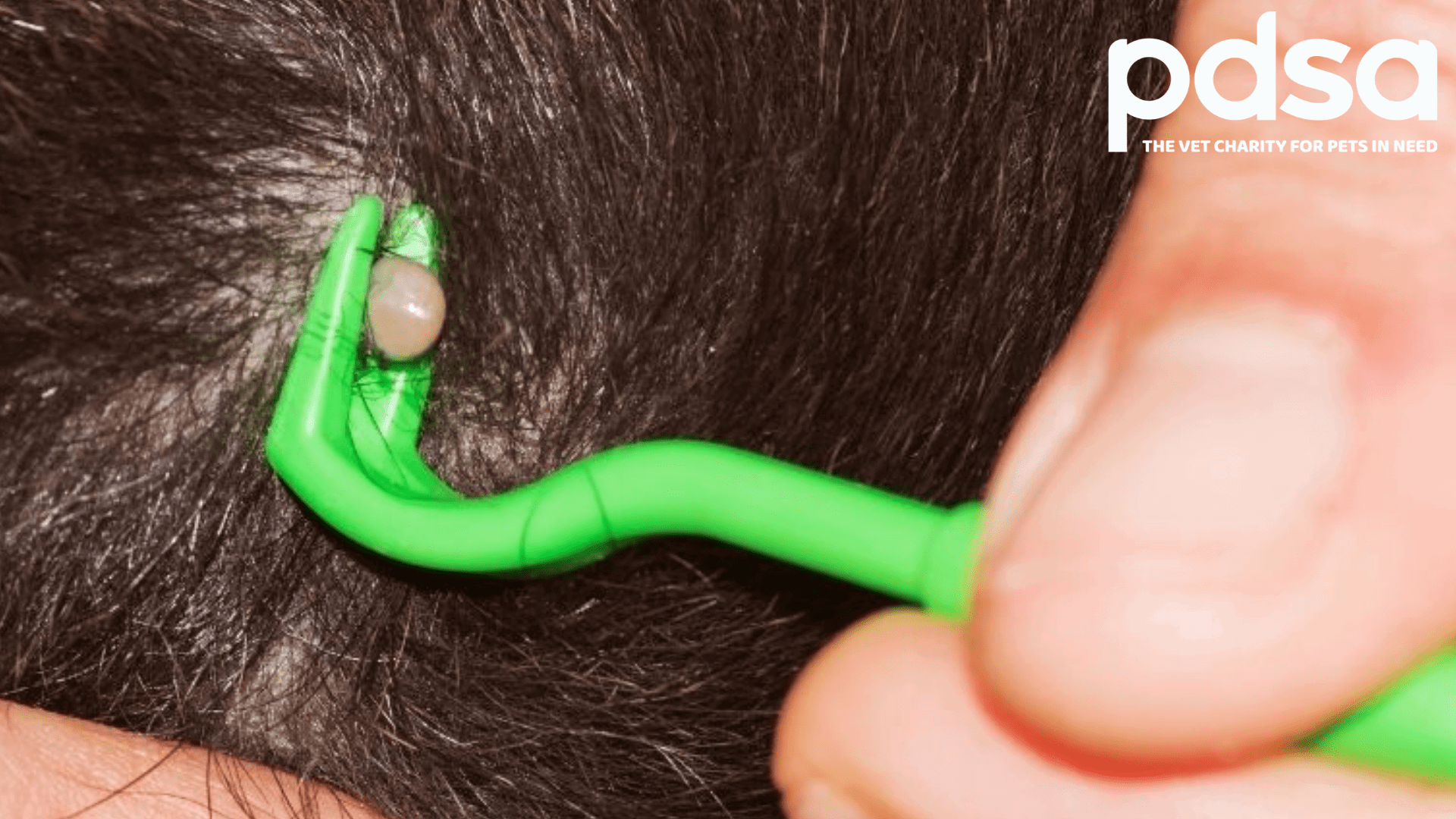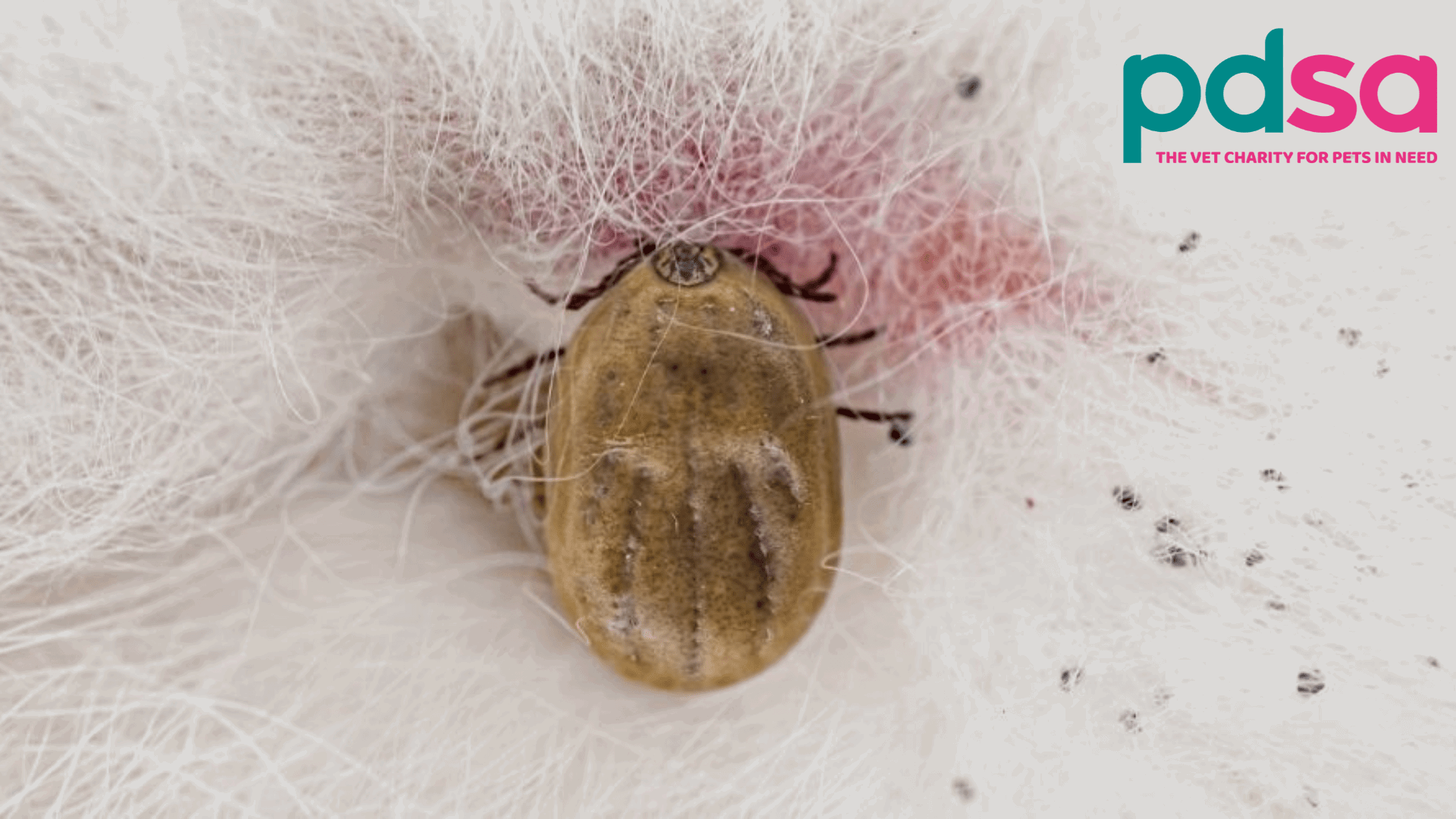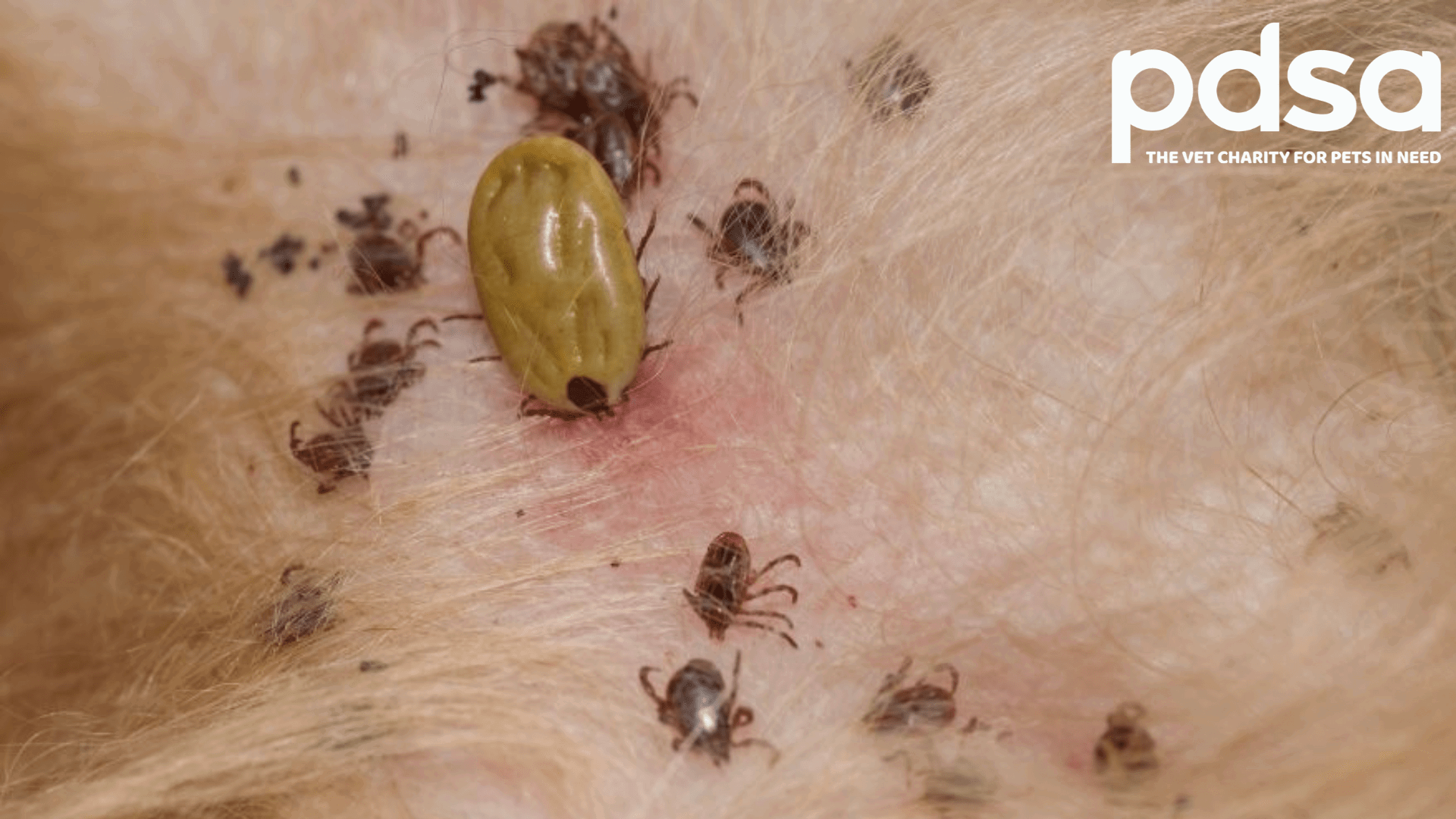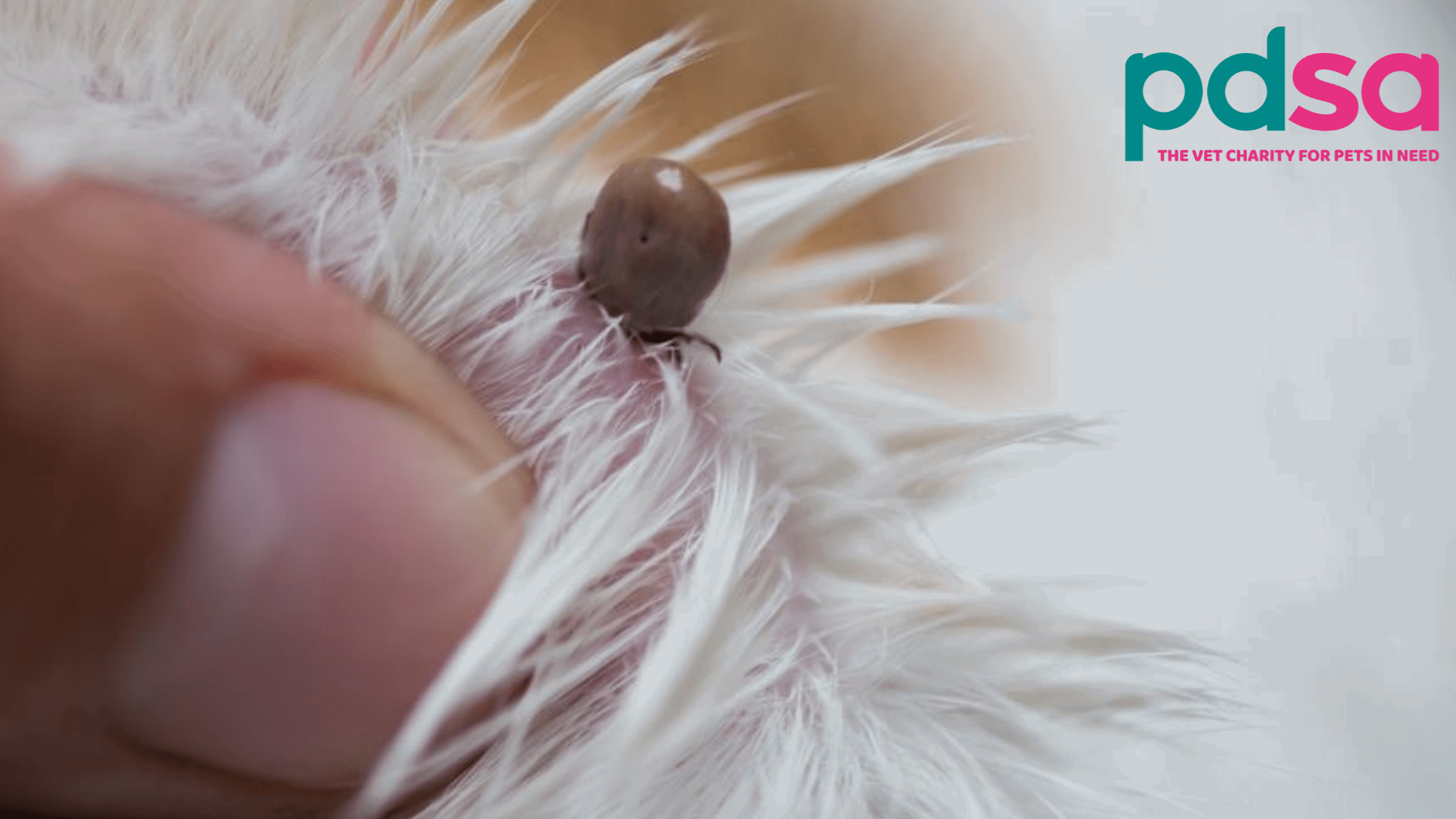Ticks on cats
Overview
- Ticks are parasites that feed on animal and human blood. They can also transmit diseases such as Lyme disease, but fortunately this is very rare in cats.
- Ticks tend to be active in warm weather, and are most commonly found in long grass, woodlands, and areas with lots of wildlife.
- If you spot a tick on your cat, it’s important to remove it quickly and properly, using the right equipment.
- Many flea treatments provide good protection against ticks, but if your cat is prone to them, or you live in a high-risk area, it’s worth considering using a repellent collar.
- Round
- Shiny
- Tiny head
- Large, flattened body
- Brown, pink, purple or a bluish grey
When a tick first attaches to your cat it’s likely to be tiny (size of a pinhead), but as it feeds, it will grow to the size of a small pea. If you look closely, you will see the tick’s eight legs just behind its head. Ticks are tricky to spot until they get quite big, which is why it’s important to check your cat regularly, especially if they hunt in long grass.
 Video found at youtu.be/sGDN5IAyngA
Video found at youtu.be/sGDN5IAyngA
Tick prevention for cats
There’s no way to completely stop your cat from getting ticks, but there are things you can do to reduce the risk:
- Regular parasite control
- If you use a regular parasite treatment that covers for ticks, any ticks that attaches to your cat should die, and drop off within 24-48 hours.
- However, it’s still sensible to remove any ticks you see. Although the risk is very small, by removing them early you further reduce the chance of any potential diseases passing to your cat.
- Repellents
- If you live in a high-risk area, or your cat is very prone to ticks, you may want to use a tick repellent collar to prevent any from attaching to your cat in the first place.
- Tick repellent collars often also provide protection against other parasites, meaning other flea treatments aren’t necessary while they are in use. Speak to your vet about the best parasite regime for you and your cat.Like any other collar, make sure any tick repellent collar you use has a quick release safety mechanism.
- Check your cat when they come inside
- If you check your cat for ticks regularly, you may find them before they’ve have had the chance to attach. Ticks are most common on the head, ears, armpits, groin and tummy.
When to contact your vet
There is no need to contact your vet if you have successfully removed a tick from your cat and are confident that none was left behind. However, if you’re concerned some of the tick has been left behind in your cat, or you notice redness, swelling, or signs of infection, contact your vet for advice. It’s also important to contact your vet for advice if your cat seems unwell after having a tick.
Find out whether you are eligible for free or low-cost PDSA veterinary treatment by visiting www.pdsa.org.uk/eligibility
Ticks and Lyme disease
Some (but not all) ticks in the UK carry a bacteria called ‘Borrelia’, which can cause Lyme disease if it’s transmitted to an animal or human. Fortunately, Lyme disease is very rare in cats, and even when it does occur, symptoms are often very mild. However, if your cat becomes poorly after having a tick, it’s always best to speak to your vet.
Can humans get ticks?
Yes – ticks can’t survive for long on humans, but they can still attach and feed from us. As well as causing irritation and infection, ticks can transmit diseases such as Lyme disease (Borreliosis) to humans. Although Lyme disease is rare, if you find a tick on yourself and you have concerns, it is best to contact your local health care services or the NHS for advice.
Published: July 2022
Did you find this page useful?
Tell us more
Please note, our vets and nurses are unable to respond to questions via this form. If you are concerned about your pet’s health, please contact your vet directly.
Thank you for your feedback
Want to hear more about PDSA and get pet care tips from our vet experts?
Sign up to our e-newsletter
Written by vets and vet nurses. This advice is for UK pets only. Illustrations by Samantha Elmhurst.





